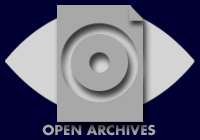Apology Strategies in Scream Queens (2015)
Mariette Wahyuningsih Montgomery(1*)
(1) Universitas Gadjah Mada
(*) Corresponding Author
Abstract
The aim of this undergraduating thesis is to classify and identify apology strategies proposed by Cohen and Olshtain (1983) and its combinations in television series Scream Queens (2015), as a television series that illustrates how U.S. college students apologize. The data used in this research are utterances of Scream Queens (2015) season 1.
The apologies found in the television series are classified based on the apology strategies proposed by Cohen and Olshtain (1983) which consist of: Expression of Apology (EA), Explanation of Account (Eac), Offer of Repair (OR), Acknowledgement Responsibility for Offense (ARO), and Promise of Forbearance (PF). Each apology speech act is classified based on the first strategy used. Utterances with two or more apology strategies are then identified and classified again according to the combinations. In this research, the total of apology strategies found thoughout their data source are 124. The most used apology strategy is EA with 59 utterances. There are 26 combinations and 4 standalone apology strategies in the television series. The most used combination is EA-EAc with 21 utterances. While the most used standalone apology strategy is EAc with 34 utterances.
Keywords
Full Text:
PDFReferences
Alexander, Louis. N.d. MS. Addic7ed. Addic7ed. 2015. Web. 1 Dec. 2015.
Babbie, Earl R. The Practice of Social Research. 12th ed. Belmont, CA: Wadsworth Cengage, 2010; Muijs, Daniel. Doing Quantitative Research in Education with SPSS. 2nd edition. London: SAGE Publications, 2010. Web. 3 June 2015.
Blum-Kulka, S.and Olshtain, E. “ Requests and Apologies: A cross-cultural study of speech act realization patterns (CCSARP).” Applied Linguistics 5.3 (1984): 207. Web. 1 Dec 2015.
Brown, P. and Levinson, B. Politeness: Some universals in language usage. London: Cambridge University Press, 1987. Web. 1 Dec 2015.
Desy, Ni Komang. Speech Act in Film “Tinker Bell and the Lost Treasure”. Published graduating paper. Jakarta: Universitas Indonesia, 2014. Web. 3 June 2015.
Dimmick, Sally. Successful Communication Through NLP: A Trainer’s Guide. 1995: 21. Hampshire: Gower Publishing Limited. Web.1 Dec 2015.
Dinu, Anca. “Felicity Conditions.” Pragmatics 2. Feb 2012. Web. 1 Dec 2015.
Emista, Moondi. Pragmatic Analysis on Best Selling Novel A Walk to Remember by Nicholas Sparks. Yogyakarta: Universitas Gadjah Mada, 2012. Print.
Eifring, Halvor and Rolf Theil. Linguistics for Students of Asian and African Languages. 2005: 3. Institutt for osteuropeiske og orientalske studier. Web. 5 Dec 2015.
Leech, Geoffrey N. Principles of Pragmatics. New York: Longman Inc., 1983. 6-13. Print.
Mey, Jacob L. An Introduction: Pragmatics. 2nd ed. Blackwelling Publishing: Oxford. 2001. Print.
Nagy, Merek. Proper Names and Their Role in Social Ontology. Olomouc: Palacky University. 2012. Web. 5 Dec 2015.
Olshtain, Elite and Andrew Cohen. “The Learning of Complex Speech Act Behavior.” Canada Journal Revue Tesl Du Canada 7.2 (1990): 46. Web. 5 Dec 2015.
Oxford Advanced Learner’s Dictionary. Definition of Seal in English for Oxford Dictionary. Web. 5 Dec 2015.
Sapir, Edward. Language: An Introduction to the Study of Speech. New York: Harcourt, Brace. 1921. Bartleby.com, 2000. Web. 5 Dec 2015.
Searle, John R. "A Classification of Illocutionary Acts." Language in Society 5.01 (1976): 1-14. JSTOR. Web. 3 June 2015.
Speech Acts: An Essay in the Philosophy of Language. Cambridge: Cambridge University Press. 1969. 42. Print
Toumi, Idriss. Students’ Awareness of Felicity Condition and Their Attitudes towards the Application of Felicitous Speech Acts. Constantine: University Constantine, 2015. Web. 2 Jan 2016.
Wardani, Nur Azni. An Analysis of Illocutionary Acts in Prince of Persia: The Sand of Time Movie. Jakarta: Universitas Islam Negeri, 2011. Web. 3 June 2015.
Válková, Silvie. Speech Acts or Speech Act Sets: Apologies and Compliments. 2004. Web. 2 Jan 2016.
Yule, George. Pragmatics. Oxford: Oxford UP, 1996: 3. Web. Dec. 2015.
Article Metrics
Refbacks
- There are currently no refbacks.
Copyright (c) 2015 Mariette Wahyuningsih Montgomery

This work is licensed under a Creative Commons Attribution-ShareAlike 4.0 International License.
Lexicon Office
| English Department Faculty of Cultural Sciences, Universitas Gadjah Mada Soegondo Building, 3rd Floor, Room 306 Yogyakarta, Indonesia 55281 Telephone: +62 274 513096 Email: lexicon.fib@ugm.ac.id ISSN: 2746-2668 (Online) |
 LEXICON is licensed under a Creative Commons Attribution-ShareAlike 4.0 International License. |
Lexicon is indexed in












